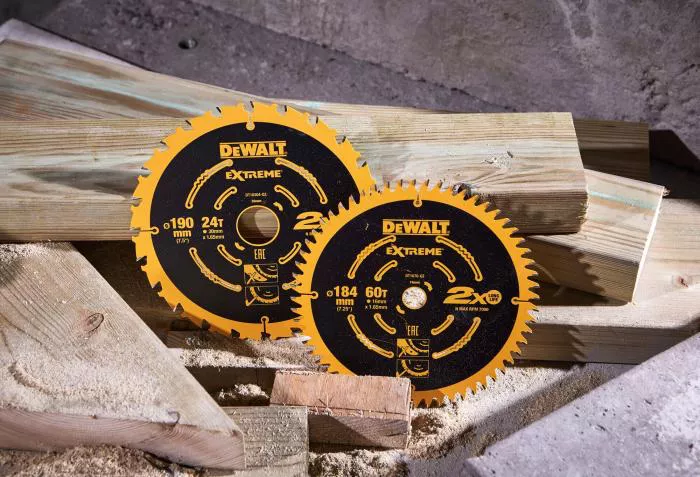When it comes to circular saw blades, the teeth play a crucial role in determining the blade’s performance and suitability for specific tasks. Understanding the different types of blade teeth can help you choose the right tool for your woodworking or construction projects. Here’s a breakdown of the most common blade types and their unique features.
Types of Circular Saw Blade Teeth
FTG (Flat Top Grind)
The FTG blade is designed for ripping cuts, where the blade cuts along the grain of the wood. Its flat-top teeth make it ideal for fast and efficient cuts in both hardwood and softwood. The FTG blade is often referred to as the “go-to” blade for ripping tasks, as it slices through wood with precision and speed, much like cutting through butter with a hot knife.
ATB (Alternate Top Bevel)
The ATB blade features teeth with angled tops that create points on either side. This design is perfect for crosscuts and cuts that intersect the grain. The alternating bevel ensures smooth, clean cuts, making it ideal for detailed woodworking projects and precision tasks.
Precision 60-80T ATB Blade
For tasks requiring exceptional accuracy, such as crosscutting plywood or performing intricate cuts, the 60-80T ATB blade is a top choice. Its high tooth count and alternating top bevel design deliver flawless results with minimal cleanup. Whether you’re working on delicate plywood or demanding precision crosscuts, this blade ensures clean and accurate cuts.
Positive Hook Angle
Blades with a positive hook angle feature teeth that slant forward. This design allows for aggressive cutting, making it ideal for applications where speed and efficiency are prioritized. Positive hook angles are commonly used in general-purpose cutting tasks.
Negative Hook Angle
In contrast, blades with a negative hook angle have teeth that slant backward. This design provides a more controlled cutting experience, making it suitable for applications where precision and stability are essential. Negative hook angles are often found on radial arm saws and sliding compound miter saws, ensuring the blade doesn’t overcut or lose control during operation.
Choosing the Right Blade for Your Task
Each type of circular saw blade is engineered for specific tasks, and selecting the right one can significantly impact the quality and efficiency of your work. Whether you’re ripping through thick wood, making detailed crosscuts, or tackling dense materials, understanding the differences between blade types will help you achieve the best results.
From the robust FTG blade for ripping to the versatile Combo/General Purpose blade and the precision-focused ATB blade, there’s a blade for every need. By choosing the right blade, you can ensure smoother cuts, better performance, and greater satisfaction in your projects.
So, do circular saw blade teeth matter? Absolutely. They’re the key to unlocking the full potential of your circular saw and achieving professional-grade results.
Related topics:
- New Milwaukee Nitrus Carbide Circular Saw Blade
- Milwaukee Introduces a Framing and Demolition Circular Saw
- 9 Best Circular Saws (2025) – This Old House

